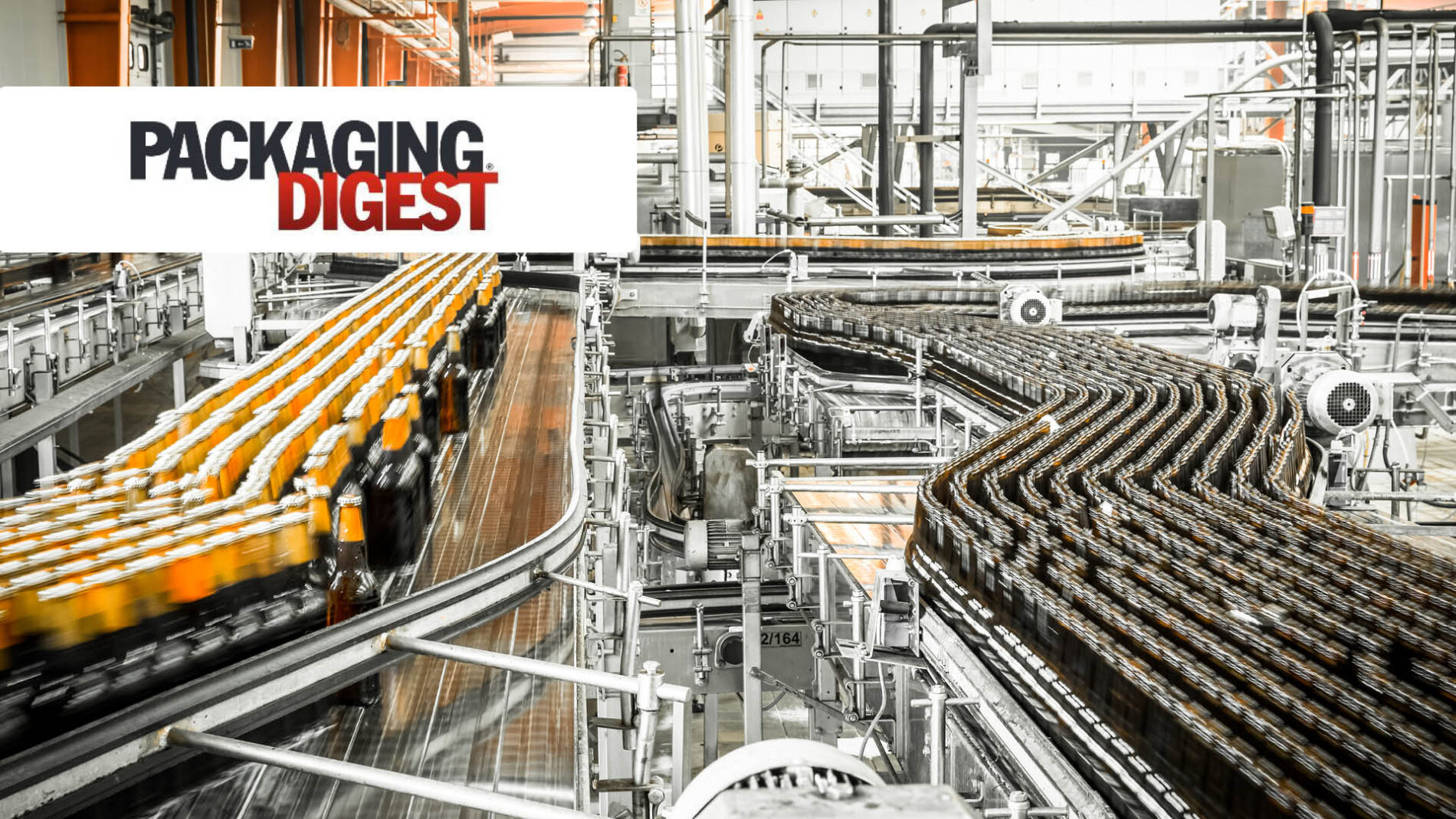Construction technology: five ways to leverage drone technology + trends to watch
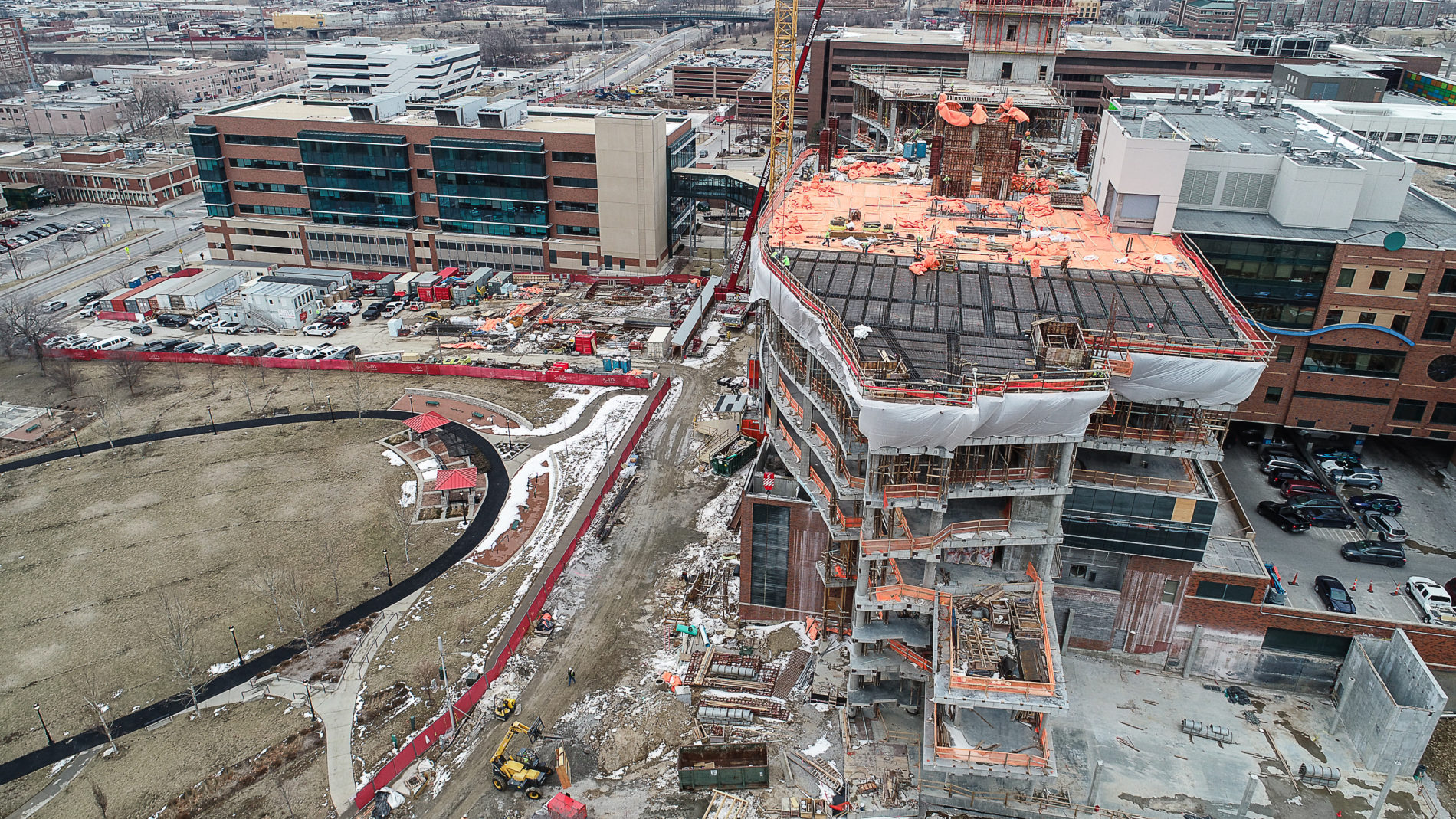
The world of construction technology is vast and ever-changing. With an entrepreneurial spirit at our core, McCownGordon has a team of innovators who dedicate their time to researching and testing the latest emerging technology, bringing the best options to our clients for a better building experience.
One technology our team has found most beneficial in construction is drone technology. Drone technology isn’t brand new, but many AEC companies are still searching for the right balance of when and how to use drones well on their projects. Dustin Burns, McCownGordon’s Director of IT, gives us the download on some truly valuable ways to leverage drone technology. He also gave us a tip about a few extra trends in construction technology to watch in the coming months and years. Here are five ways drones can add value to your next project.
-
Hard-to-reach inspections
At McCownGordon, we were an early adopter in drone technology. We started off small by doing things where it made sense for life-safety. For example, back in 2014, we inspected a roof leak at the National Museum of Toys/Miniatures Renovation project by flying a drone over the roof. Using the drone instead of a ladder or renting a lift allowed the team to quickly identify and fix the problem. Using drones to complete visual inspections for hard-to-reach or potentially dangerous locations is a no-brainer. It’s safer, faster and often more cost-effective.
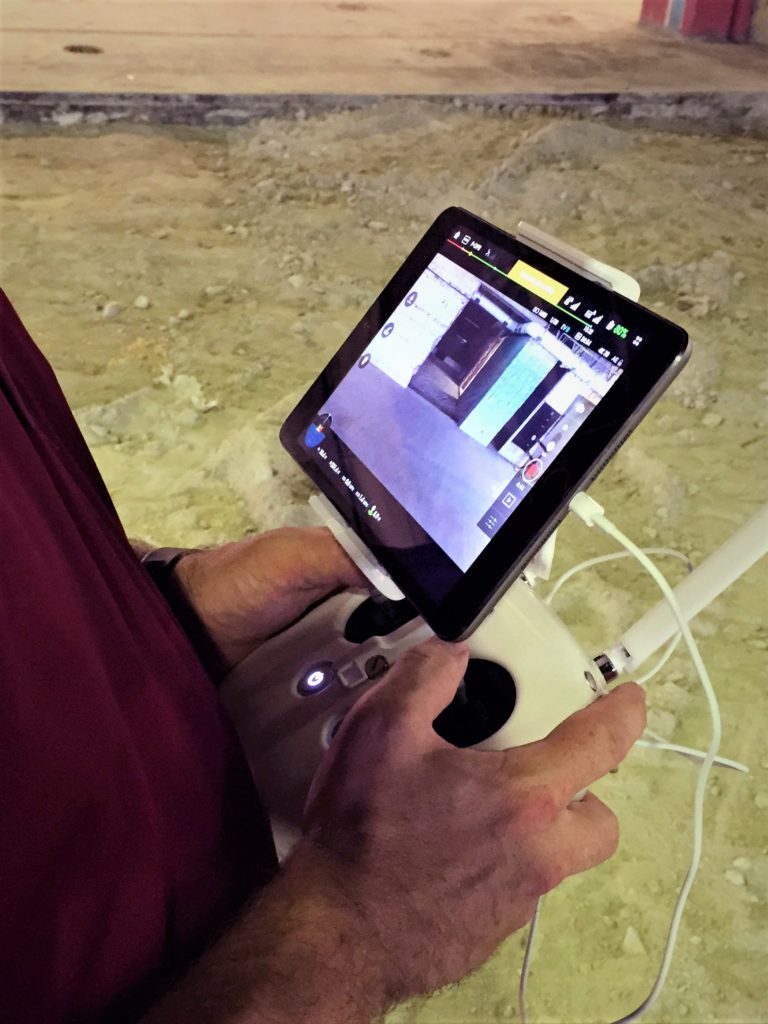
-
Document final, progress or existing conditions.
Another way we use drones is by taking aerial progress photos for monthly project reports. On a large or complex site, drones are a great resource for documenting existing site conditions. Drone footage also creates fantastic visuals to display completed projects, as we’ve seen used in many applications.
-
Aerial Photogrammetry
Photogrammetry is the science of using focal points with the lenses of the camera to determine distance. With just a camera, we can measure within about a quarter of an inch accuracy. This becomes a pretty powerful measuring tape when you can use the aerial perspective from a drone. The new ground-up LMH Health West Campus project used photogrammetry for layout of site utilities. Then, another project team member was able to use the same photogrammetry data to locate building components on site.
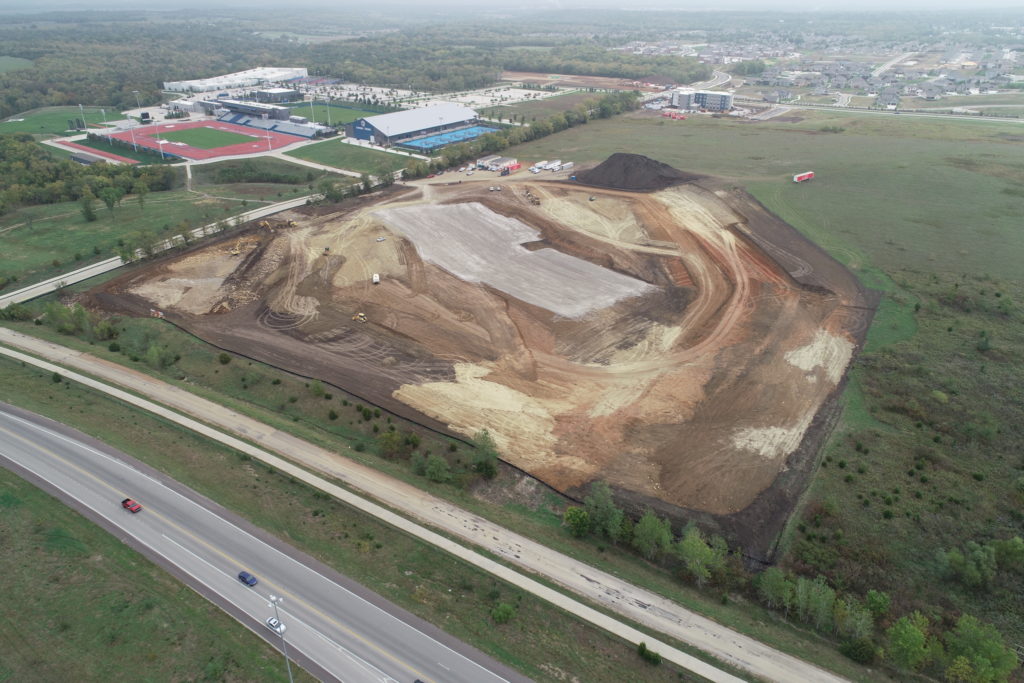
-
Site selection
Drone footage allows us to get a real-time photo of what a site looks like. (Many times, people are leveraging Google Maps for aerial shots, which can be outdated.) So, say the owner wants help selecting the best site out of three options. We can scan those three sites, bring them into our earthwork take-off software and get an idea of what the earthwork costs would be.
We did this on the LMH Health West Campus project to help the owner select the final site. Once they selected the final site, our team did the full mapping. Then our design-build partner, Pulse Design Group, took the images into a 3D model, virtually cleared all the trees and showed the new building on the actual site.
-
Building and equipment layout
On a large scale, as with the site selection, we can use aerial drone images to position a building on the site. Using data from the drone footage imported into our earthwork take-off software we turn the building or place it on different spots of the site and evaluate associated costs.
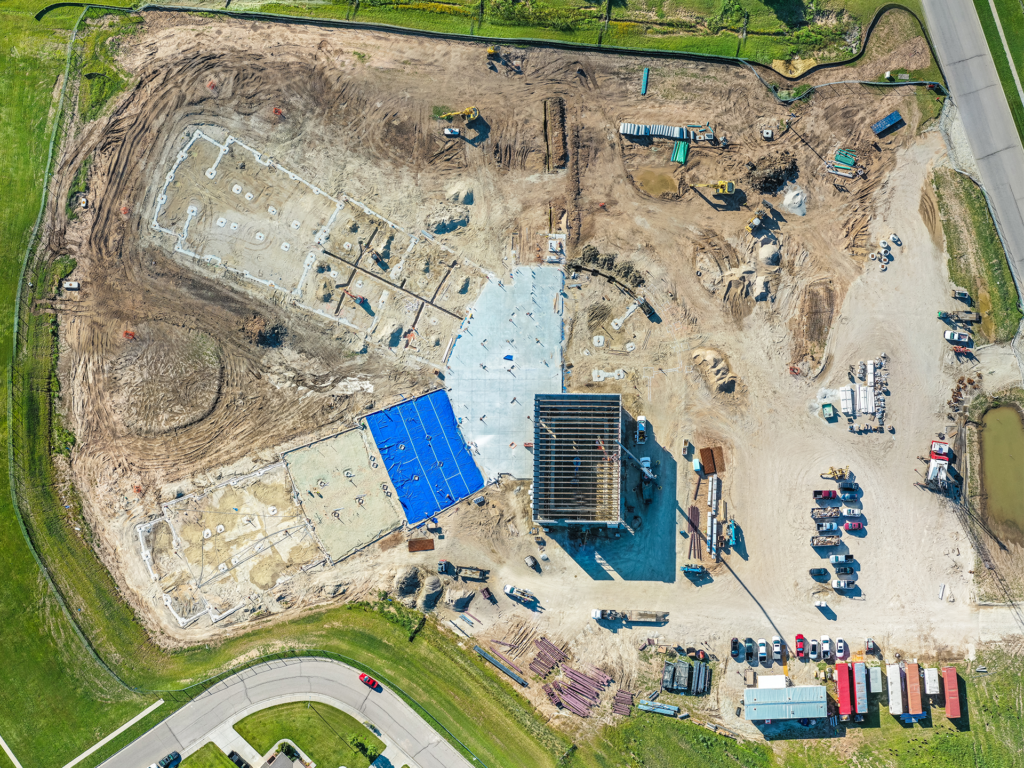
A smaller example is for equipment layout. Our team needed to place some equipment on the MRI Global roof but couldn’t get a good measurement with a laser scan or measuring tape because there were too many objects in the way. Using a drone, we measured it, mapped it and got visuals so our team could virtually locate where the equipment needed placed.
Our team is always watching the next, upcoming construction technology trends. Right now, there are two hot issues Dustin sees as “must watches.”
Trend to Watch #1 – Automation and Robotics
Let’s fast forward to where are things going: more automation and robotics. Earthwork machinery is becoming autonomous; using geo-referencing to set the blade height and make cuts into the grade. And the autonomous brick laying robot is already out. As these technologies improve and expand, construction will have to become more modular which enables even more equipment to do repeatable tasks on the jobsite.
Obviously, autonomous technology isn’t fully ready for deployment with regards to safety concerns. For example, if an accident is imminent, we can’t yet trust the robots to decide between potentially hitting a building or a person in a crosswalk. So, I believe we’ll see the next phase roll out as more of a co-bot, a collaborative robot.
Picture an ironman suit (exoskeleton-type technology) than enables anyone, not just the strongest workers, to perform a more labor-intensive task like angle-grinding for 8 hours a day. This could really level the playing field for more participation in the trades workforce and help with the construction labor shortage.
Robotic process automation (RPA) is a different kind of robot. It’s software-based and you can watch it work on a computer screen. We leverage these robots to augment office staff to focus on the most impactful tasks. If you’re doing the same software process over and over every day, RPA can do that for you.
Trend to Watch #2 – Data Analytics & AI (Artificial Intelligence)
I think one of the most impactful technologies to hit construction is artificial intelligence. We are currently leveraging this technology in small ways, but I expect this to increase in the coming years. The fuel for AI is data. Firms can begin realizing the value of their data by leveraging machine learning to create predictive AI models.
With data analytics there are three levels: descriptive, predictive and prescriptive. Most firms have descriptive in place (which is essentially reporting), but may not be leveraging the meta data yet. As you evolve into the predictive realm the quality of the data is key. Prescriptive is where the machine is making business decisions based on its own cognitive learning.
We’ve all experienced AI on the web with image recognition (with CAPTCHA). AI-based image recognition is an easy way to experiment with AI in construction. We have used AI to scan jobsite photos to identify safety concerns and to optimize a schedule by allowing AI to run simulations of a project schedule and narrow down the best ideas. AI can’t replace a skilled project team, but AI can make our project teams safer and more efficient.
McCownGordon stays on the leading edge of construction technology, leveraging the most advanced tools to provide the best building experience for our clients and partners. One new tech tool we use is our interactive project planning tool. This tool gives us an insight to your project before you begin. We are always looking for new partners who push the envelope for innovation, check out our project planning tool to get started.



